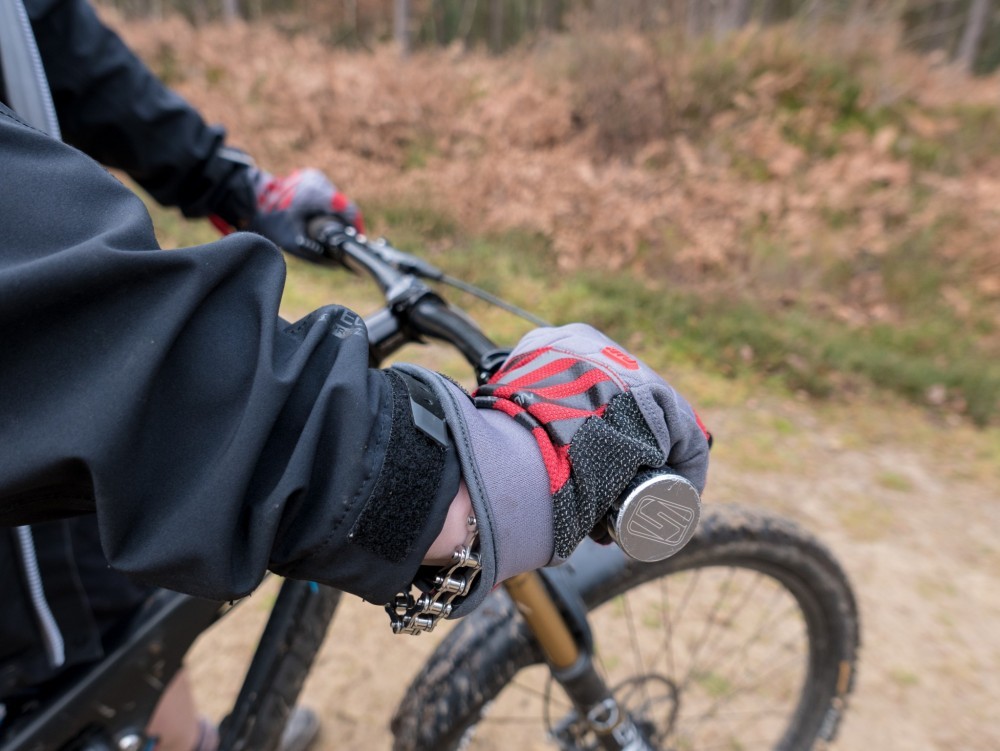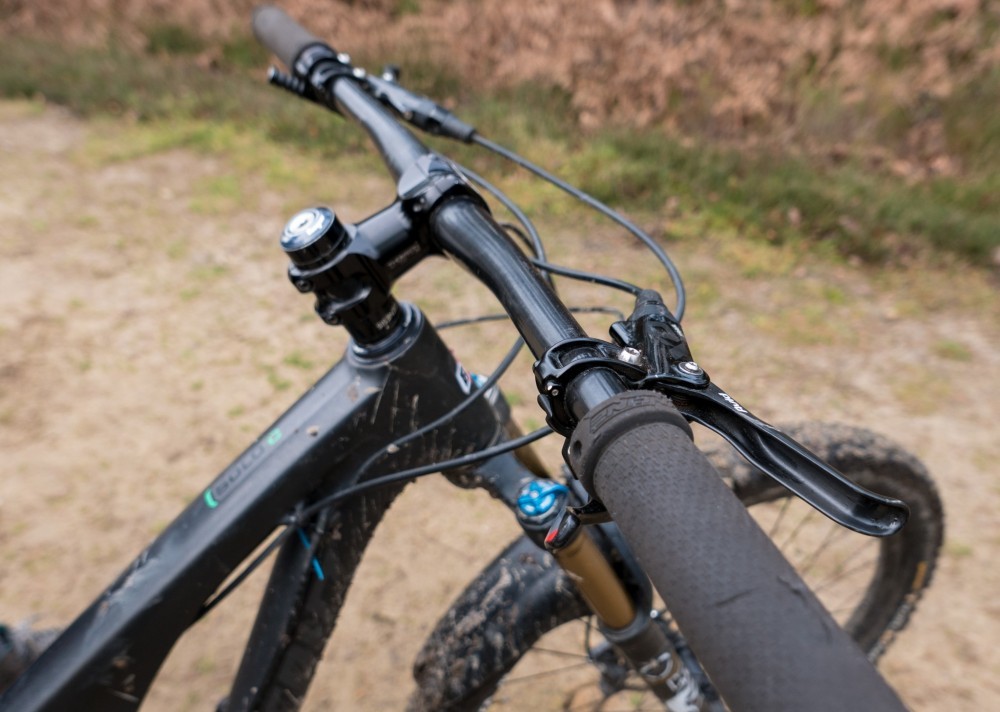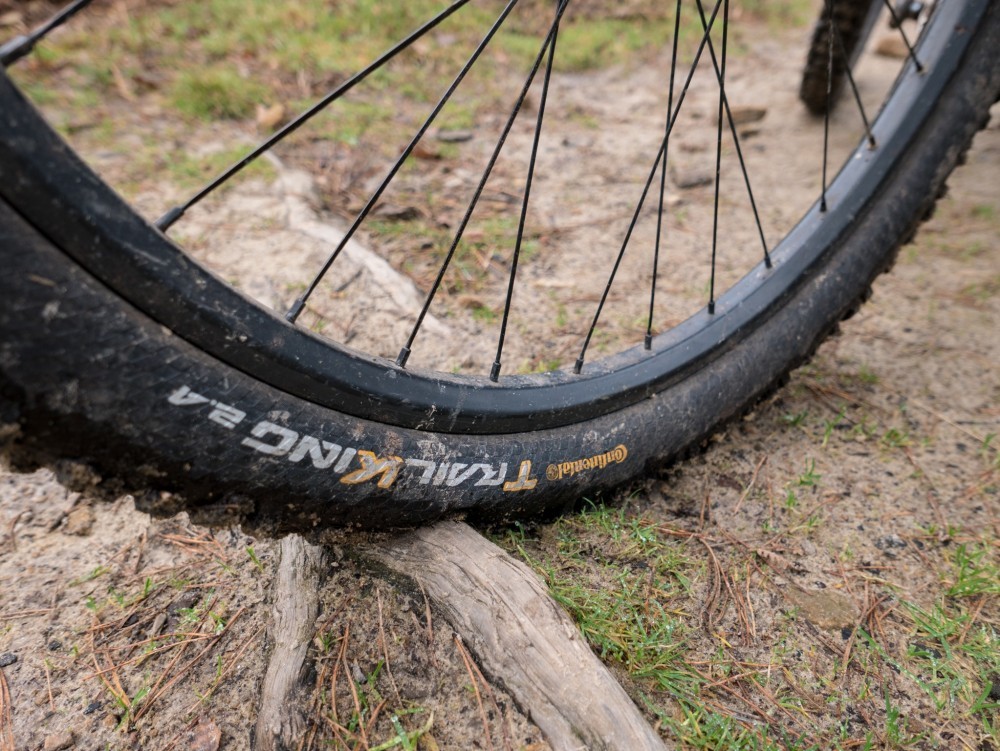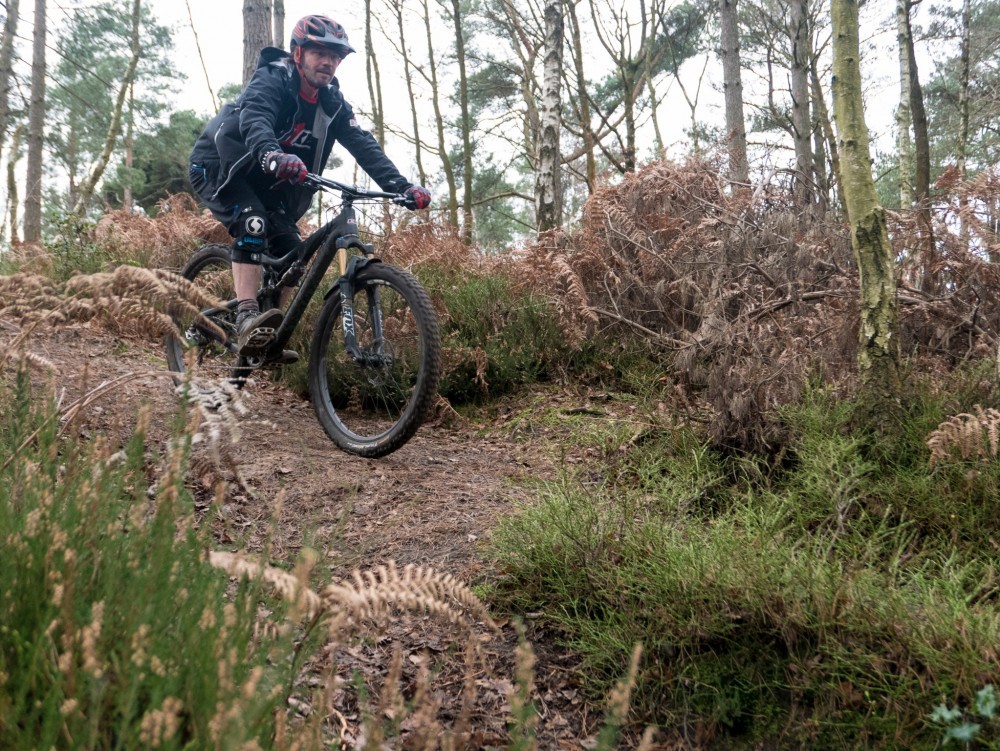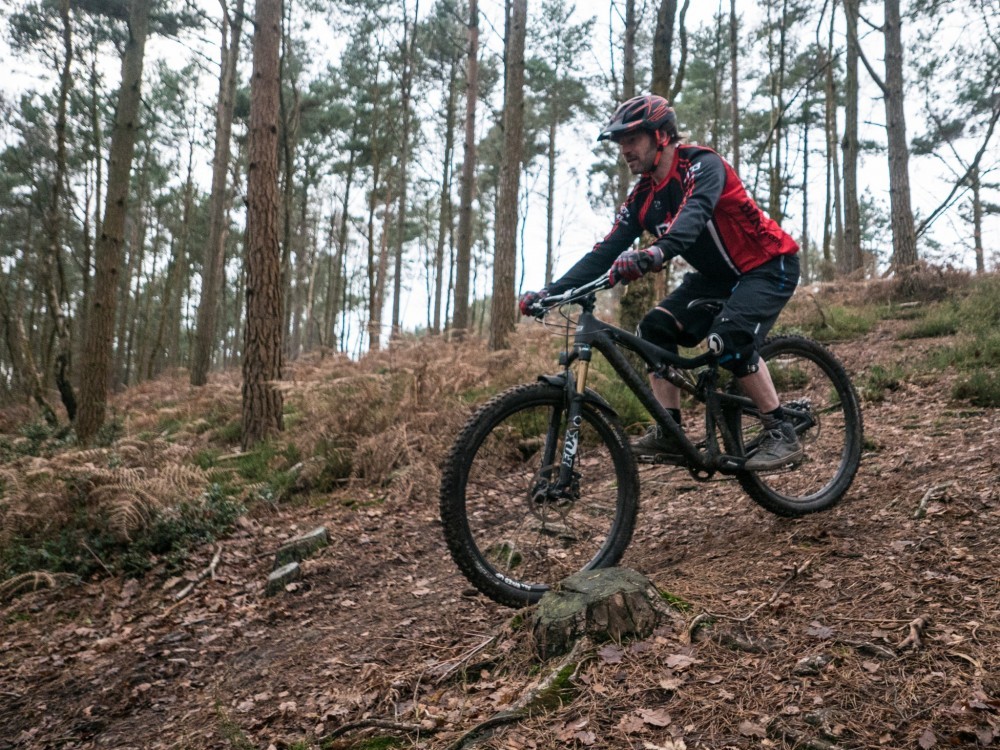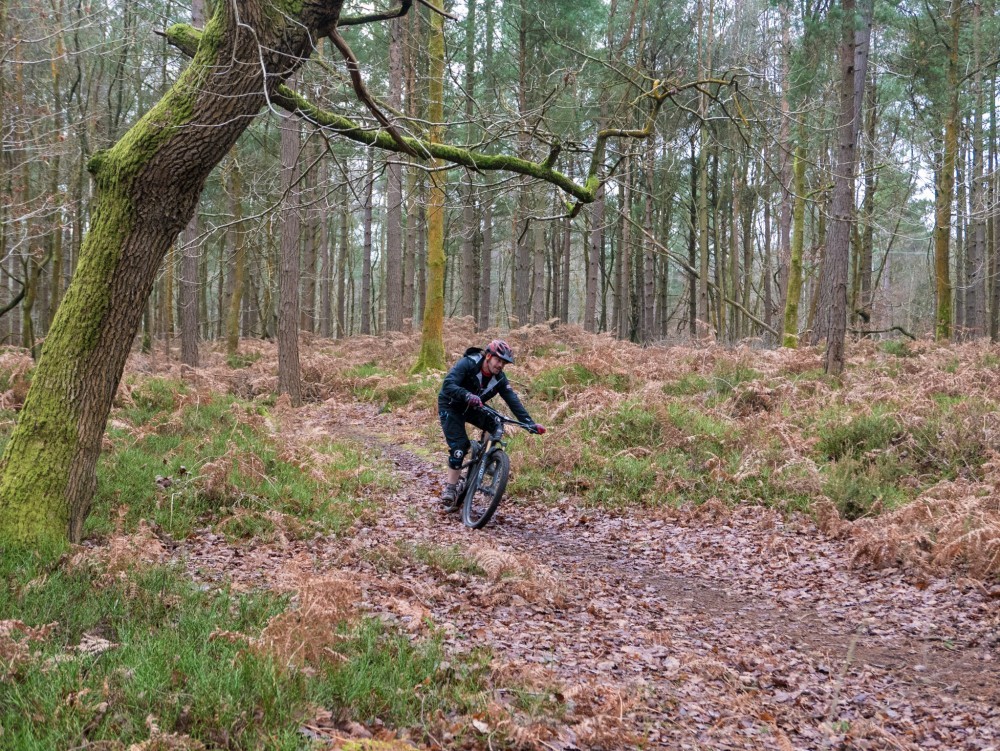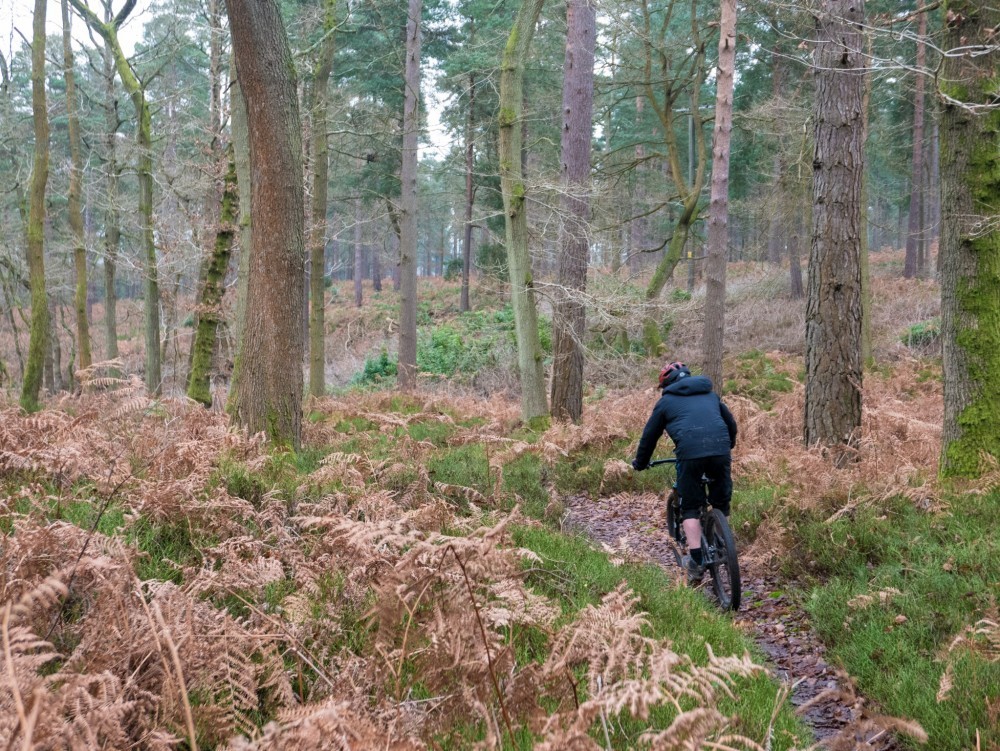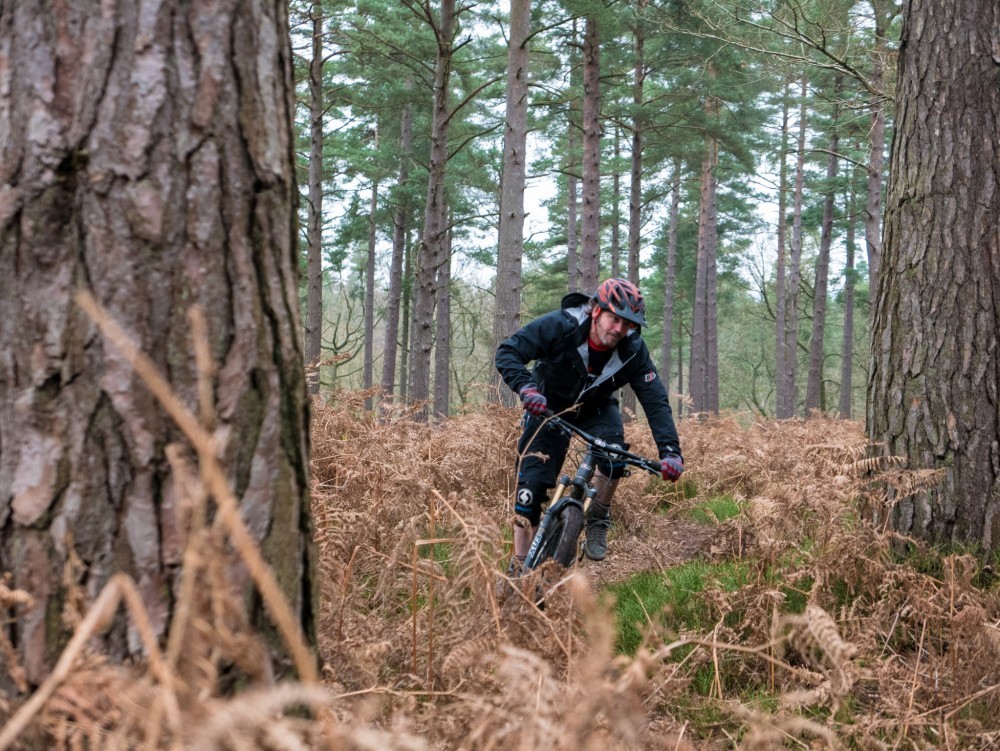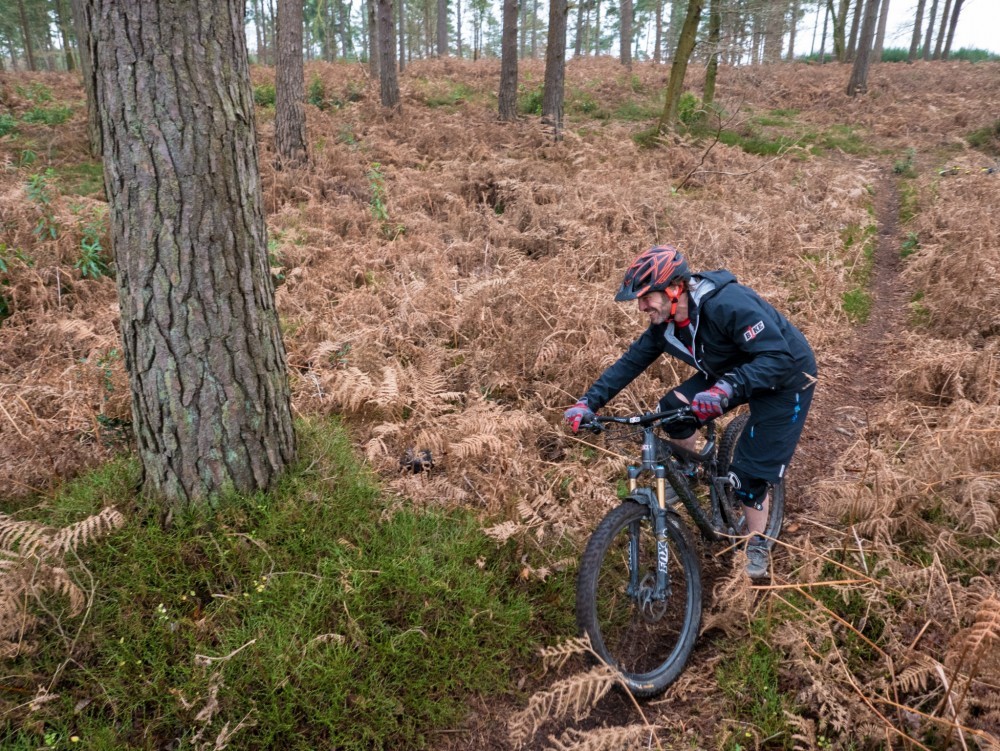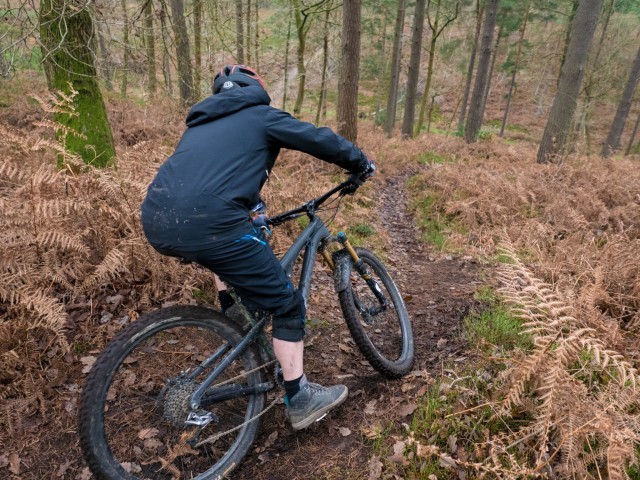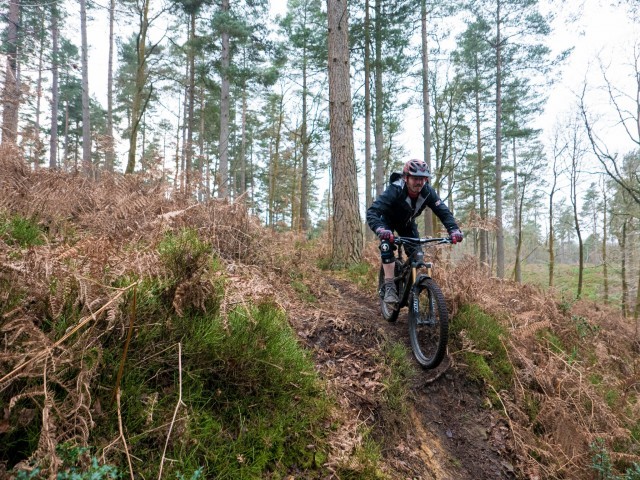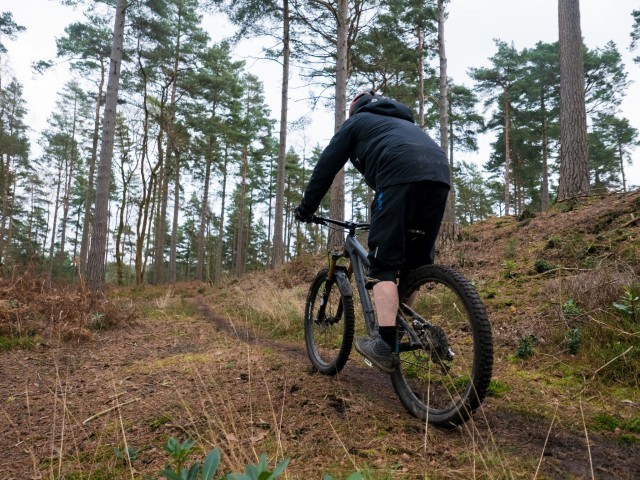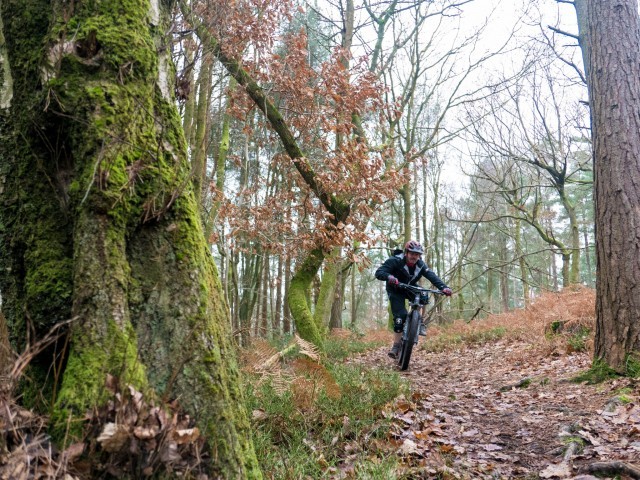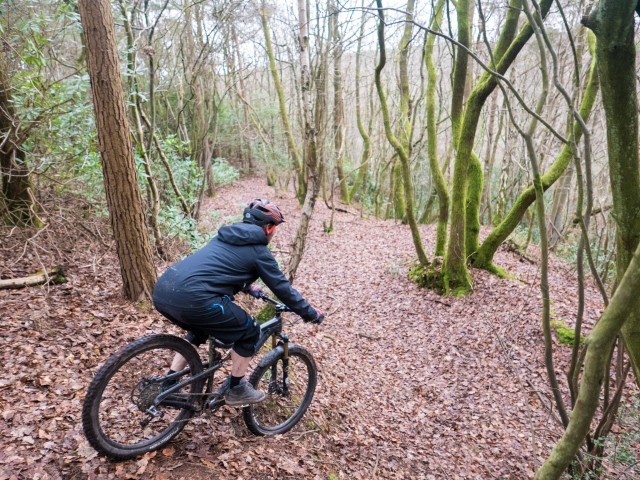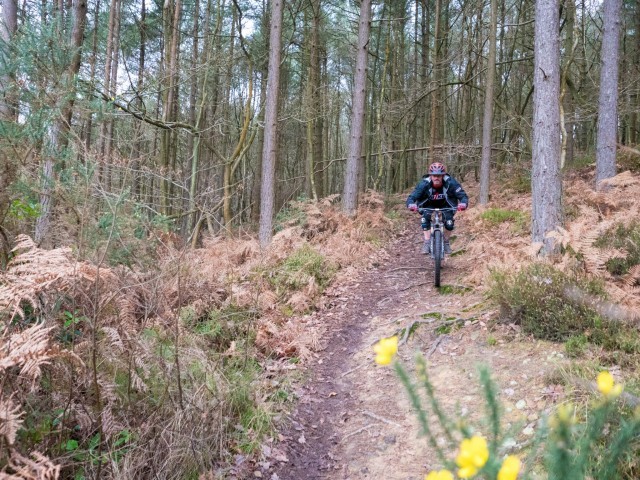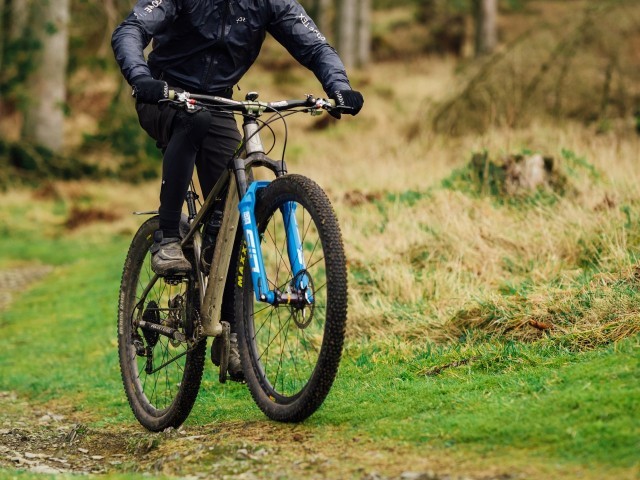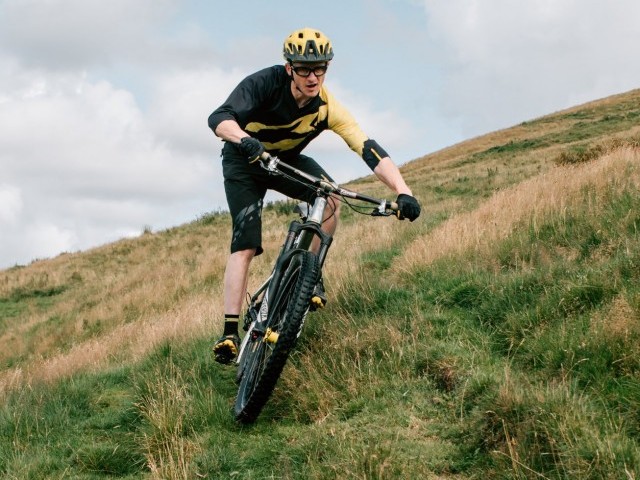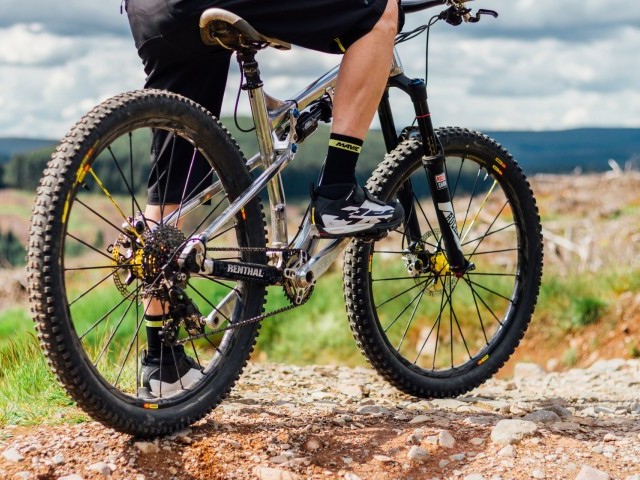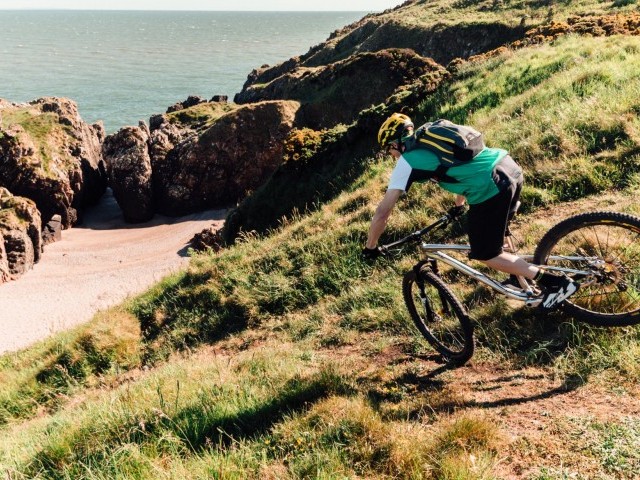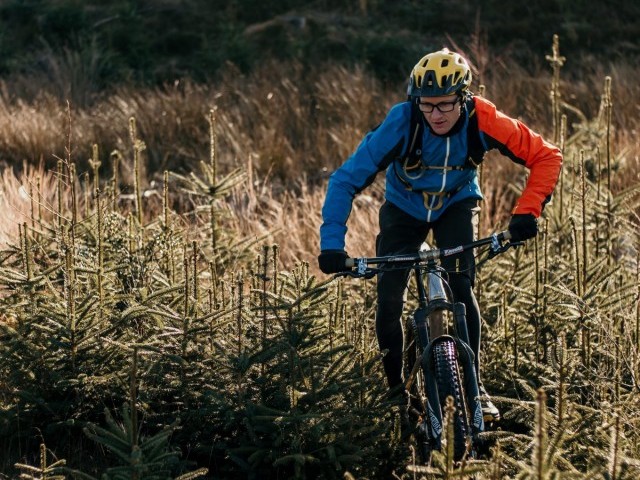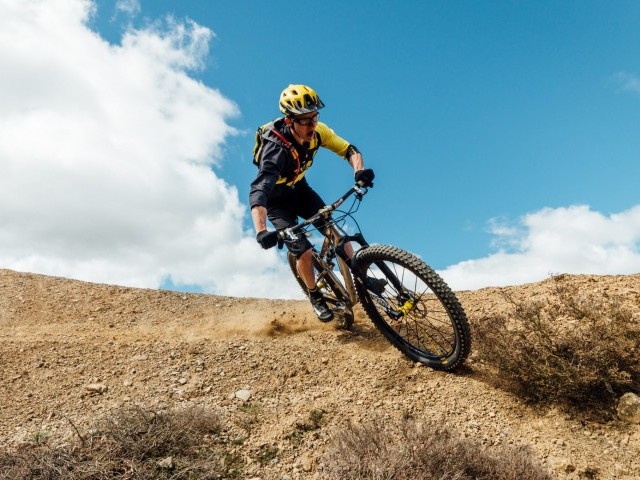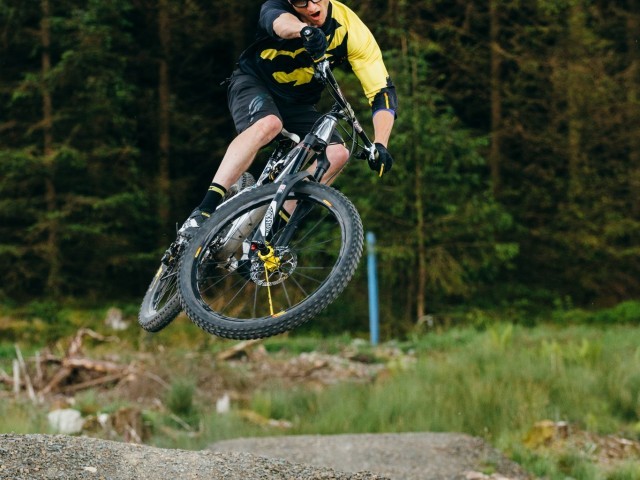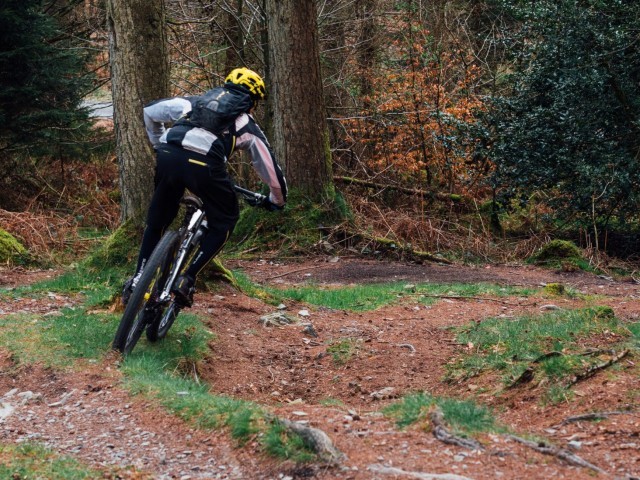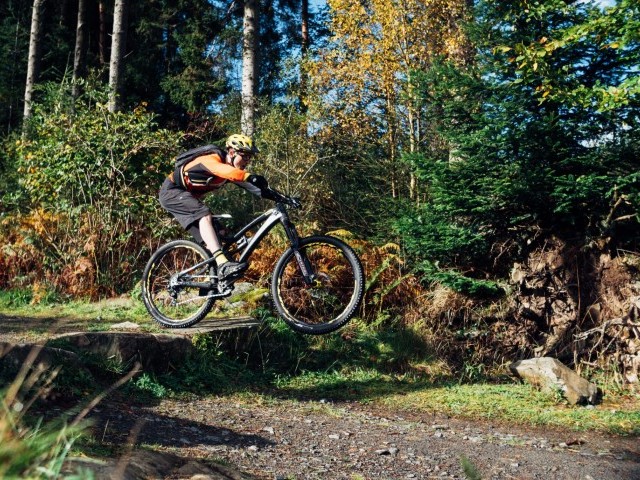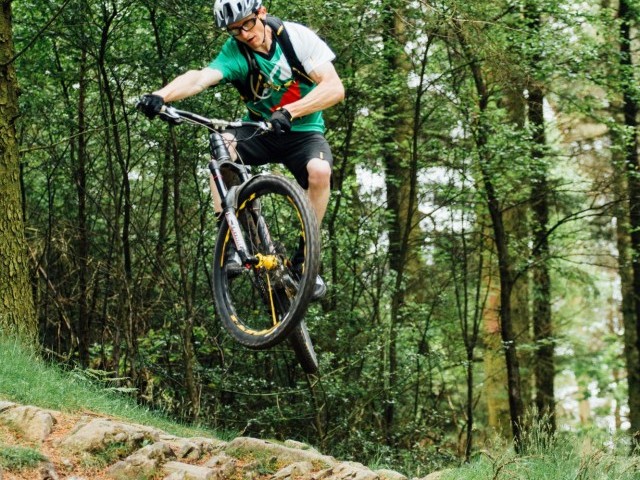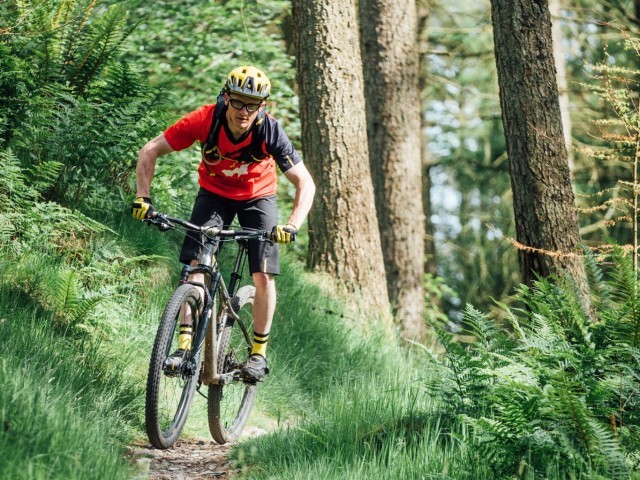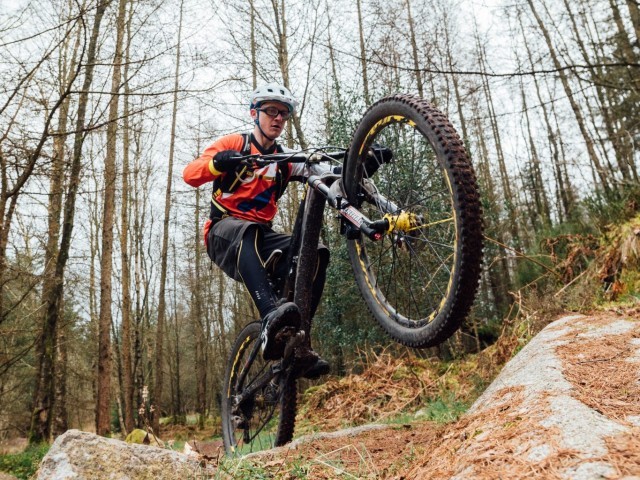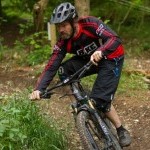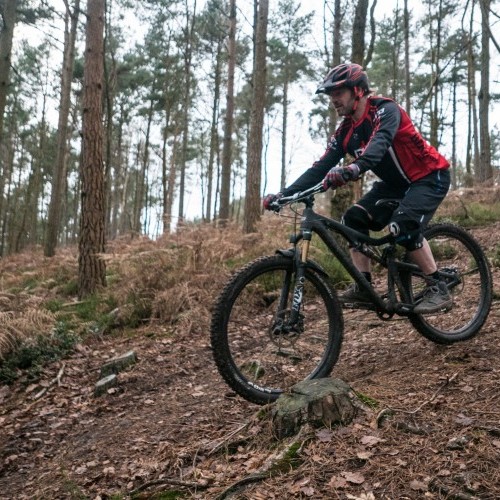
Frequent Flaws & Quick Fixes
Technique / Skills
Introduction
When it comes to improvement, every rider has their individual needs; there are some issues that that are common to many riders, whether they are new to the sport or long time veterans. The good news is that these issues are as easy to fix, as they are common. Even those of us who feel confident in all but the most technical of terrain might suffer to a lesser degree from these issues some of the time.
Some of these issues can be addressed from the comfort of your shed or workshop; some will require a physical change while others are more of an amendment to your mind-set. The bonus is that none will require you to flex your plastic, run up debts or engage in an awkward conversation with your significant other about your spending habits. It’s more a case of opening your mind, rather than opening your wallet.
So, this festive season we take a look at frequent flaws and fails, and figure out fixes that will ensure your future forays into the forest flow.
How’s that for some fluid alliteration!
Bike Set Up
There are many, many aspects to the set-up of a bike and the higher the level at which you perform; the more attention to detail, constant fettling and tweaking will be required to reach peak performance. Many of these changes will be subtle and are about shaving tenths of a second off runs and will be highly personal to the individual, the type of riding you are doing or terrain you are covering.
There are, however, a couple of really easy fixes that will promote a better performance and greater control and are commonly overlooked or ignored. The first is tyre pressure; if you are coming from a road riding background (or read the advice on the side of the tyre), it’s easy to see why you might get this wrong. Commonly the advice on the wall of the tyre will recommend pressures of between 35-60 psi. The lower amount is frankly OTT for most scenarios, as for the upper figure, it is utterly bonkers. If you want to bounce off every root and rock, and have a bike that is twitchier than a racehorse going cold turkey, then by all means fill your boots, and your tyres, to this level.
Grip will elude you and, contrary to a road tyre, your rolling resistance will be increased rather than reduced. A rule of thumb is that you want the tyre to feel more like an orange than an apple. Clearly you don't want pinch flats to blight every ride, but to maximise your performance the tyre needs to give slightly as it engages with rocks or roots, softening your ride and helping you find grip.
The second subtle change you can make that will have connotations way beyond your initial expectations is the position of your brake levers. There is a lot written about how far along your bar the lever should be, but this will affect performance to only a minor degree. The real focus should be the angle at which the lever is set.
Raising your levers will encourage and enable you to ride with dropped wrist while still being able to reach the lever. By dropping your wrist, your contact with the bars is less reliant on gripping tightly with your hand and fingers. Strangling your bars will amplify any feedback from the trail and lead to, among other things, arm pump and tightness in your shoulders. Pushing into the bar through a dropped wrist will alleviate the need to crush your grips so hard they squeal. It will also help overcome an issue that is, as luck would have it, our second frequent flaw to fix.
Sit Into It, Not On Top Of It
Most people learn to ride sat heavily on their saddle, learning to balance on top of their first bike. Even if you by-pass stabilisers by graduating from a balance bike to your first pedal bike, the chances are that you learned the hard way - balanced on the saddle with too little pressure on your feet. This position, right from the off, gives you a higher centre of gravity than is desirable either on or off-road. Even once we learn to stand up on our pedals (or push harder into them while seated), it is common to see riders very much 'balancing on' rather than pushing though and into the pedals (and bars). Utilising the leverage of the ankles and wrists is a game changer. As soon as we drop heels and wrists we can 'sit into' the bike. Our mass and momentum start to drive the bike rather than tow it along. In short, we become the under-rotating mass and the bike becomes the accelerating mass (OK so that isn't so short, but it is nonetheless a crucial difference).
On the trail the bike bucks, pivots and can easily stall. When it does those that don't sit into the bike will find they are pushed up and forward. Trips over the bars are not always the result, but there is lots of time spent correcting body position and fighting to stay on the bike. Dropping the wrist and heel sitting just behind the front/back centre line and with hips just below the horizontal centre line puts you in what we call 'the pocket'. From here you can drive the bike when your body mass starts to get pushed it drives energy through the bike rather than you overtaking it. Right away you will start to feel in far more control; you can push to accelerate the bike or soften to deal with inputs. Sat into the bike with dropped heels your contact with the pedal is far less likely to be interrupted, in fact, the more the bike stalls, the firmer your contact. Remember, dropping the heel and wrist accelerates the bike while dropping the toe accelerates only you.
I've coached riders with years of mountain biking experience and seen their eyes widen as the penny belatedly drops that they have spent thousands of hours trying to balance on top of a bike that they just needed to sit into a little more. If that penny is still wobbling and bobbling for you, then drop your saddle an inch or two and drop your heel and wrist the same amount and feel the difference. Once you start to sit into the bike, you will quickly be able to understand and overcome another common issue that is (as if by design) the third frequent flaw to fix.
Push, Don't Pull
We have looked at this in many different scenarios and it must go down as one of the easiest mistakes to make in the self-taught rider. Whether as a result of inherent flight and fight responses, or an intuitive but misguided instinctive response, pulling up on the bars or the pedals is a deeply flawed technique that we need to train out of our riding. Pulling, in general, slows the bike and accelerates us. The short term gain in getting wheels up and over things is short-lived as the rider quickly becomes the accelerating mass and either lands heavily on or overtakes, the bike. Either way, the result is at best destabilising, at worst...well, it’s plainly far worse.
Like many of the frequent flaws we have identified, part of the problem stems from old school thinking and misconceptions. Back in the day advice pertaining to getting your wheels off the ground was to pull up on the bars hard and to either hook your toe under a flat pedal or pull up on a clipless pedal. Momentary lift may result, but you are likely at best to land heavy and contribute to the bike stalling, or accelerating over the front end. The 'fix' here is to develop the skill of pushing energy through the bike to unweight.
Leverage and counterbalance are the correct approaches to raising either the front or rear wheel. Driving through feet and hands you can accelerate the bike as your body mass moves rear of centre - this will create a far smoother unweighting of the front wheel and allow it to rise smoothly. Re-centre your body and soften your legs to allow the back wheel to follow suit. Straight away you will notice how much more softly you land than when you simply hoik or huck the bike up off the ground. It is not only when trying to get the wheels over things where a quick tug can get you into bother.
Pulling to steer is also an issue that can have a rider wondering why the bike is no longer below them. Pulling to steer is a major contributory factor in many a front wheel washing out. By pulling, you slow the bike and it can quickly tuck underneath you as your weight is pushed forward as a result of your actions. The fix is to trade the pull on one end of the bar for push on the other. In doing so, you accelerate the bike - pushing it through the corner. The accelerating wheel is far more likely to retain traction and as the rider, you are far more likely to stay in the 'pocket' rather than getting pushed forward and up. Through a dropped wrist, that 'push' will engage the tyre with the trail and help you find grip.
If you find yourself rotating forward or ahead of the bike while airborne, you land heavily towards the front end or you are suffering from your front wheel washing out in corners, it is time to get your coat...you have almost certainly pulled.
Relying On Technology Over Technique
I am certainly not advocating failing to take advantage of advances in design and technology that may assist your progression as a rider. Who doesn't like trading a little of their disposable income in getting a better performing shock, brake or tyre? Relying on technology, however, to overcome all your riding issues is costly both financially and in terms of longer-term success. If you regularly take trips over the bars, then adding 10, 20 or 30mm to your front suspension probably won't resolve the issue. If you lose the front or back end from below you and can't find traction, tread pattern and compound are probably not the primary contributory factors - pressure and rider performance play a far bigger role.
Technology will help amplify the results of good technique and may mask, to a degree, some elements of bad technique, however, technology won’t overcome anything other than minor shortcomings. As the adage goes “a bad workman blames his tools”. Before you blame your kit for your failings, take a look closer to home. Spend the time it takes to earn the money you’d fritter on upgrading your parts on developing your skills and you will, no doubt, get a far better return.
If you do have the 'urge to splurge', direct some of that budget on some accredited training. Where you do upgrade your components, spend time understanding how to make that investment pay dividends. A new bling shock with multiple adjustable settings won’t help if you simply slap it on your bike without understanding its functionality. Sharper more powerful brakes might stop the bike quicker, but if you don't engage with the bike correctly the bike might be the only thing to stop... Whether making the best of what you have got, or getting more out of money you invest, good technique and enhanced understanding should be the first upgrade you make.
If you are image conscious and motivated more by increased kudos than anything else (not that you should be), ask yourself which will earn you more of the admiration you crave: riding smoothly and fluidly on a lower end bike or riding like a squid on a pimped up extension of your ego? Focus on your technique first and foremost and the result will be that you will get so much more from your bike no matter what your budget.
Optimal Vs. Maximal
As well as making sure you get the best from whatever your budget might be, revisiting your criteria for success can help when it comes to making rapid progress and continually improving. A regular flaw in finding the path to success is simply trying to ride fast, or trying to go big. Simply not crashing on one section doesn't mean you are ready to push the envelope further.
To get better 'polishing' your riding is more important than just 'pushing' it. If you only ever try to go bigger and faster without upping your skills all you will learn is where your limits lie. The better riders - those that progress the fastest and reach the higher heights - are the ones that engage in a process of developing the optimal. There is, for certain, a 'stretch zone' that helps develop you as a rider, and you are going to have to test your new skills at some point, but much of the learning is done on terrain that is below your own personal 'level 11'.
To gain speed or tackle the more technical trail and develop it is often necessary to first slow down. You need to buy some time in order to add the 'thinking' back into a technique (that you may have developed to a level of unconscious competency) if you want to develop it further. Breaking down a skill into its component elements and polishing those elements individually may require you to step away from the most technical of terrain you can currently 'survive'. Speed or technicality can be ramped up once you are riding more technically correctly. The more you work on the optimal, the more your maximal will grow. Try to ride smoother and you will end up faster. Just try to ride faster and you’re more likely just to end up ragged. The mind-set shift away from maximal and more towards optimal is the first step to better performance and more longstanding success.
Of course, the above is not an exhaustive list of the issues riders face in search of better times on a bike and continued development, but they are certainly among the more common. You may suffer only to a degree from any or all of the above and there is little shame if you do...it'd just be a pity not to address the ones we do recognise.
Progression fuels passion, the better you do things, the better it feels and the more you want to do it. With this in mind, why not spoil yourself...after all; it is the season to indulge a little.
Seasons Greetings to you all and may 2016 be the best year of riding you've ever had.
This technique article was in Issue 39 of IMB.
Related
By Richard Kelly
Richard Kelly has been riding bikes since forever, and teaching people to become better mountain bikers for over a decade. He’s always out in the Surrey Hills training riders, building trails and riding for himself whenever he gets the chance. His unique perspective on mountain bike technique has earned him fans the world over, with some speculating he is actually Jamiroquai or perhaps Jack Sparrow…






